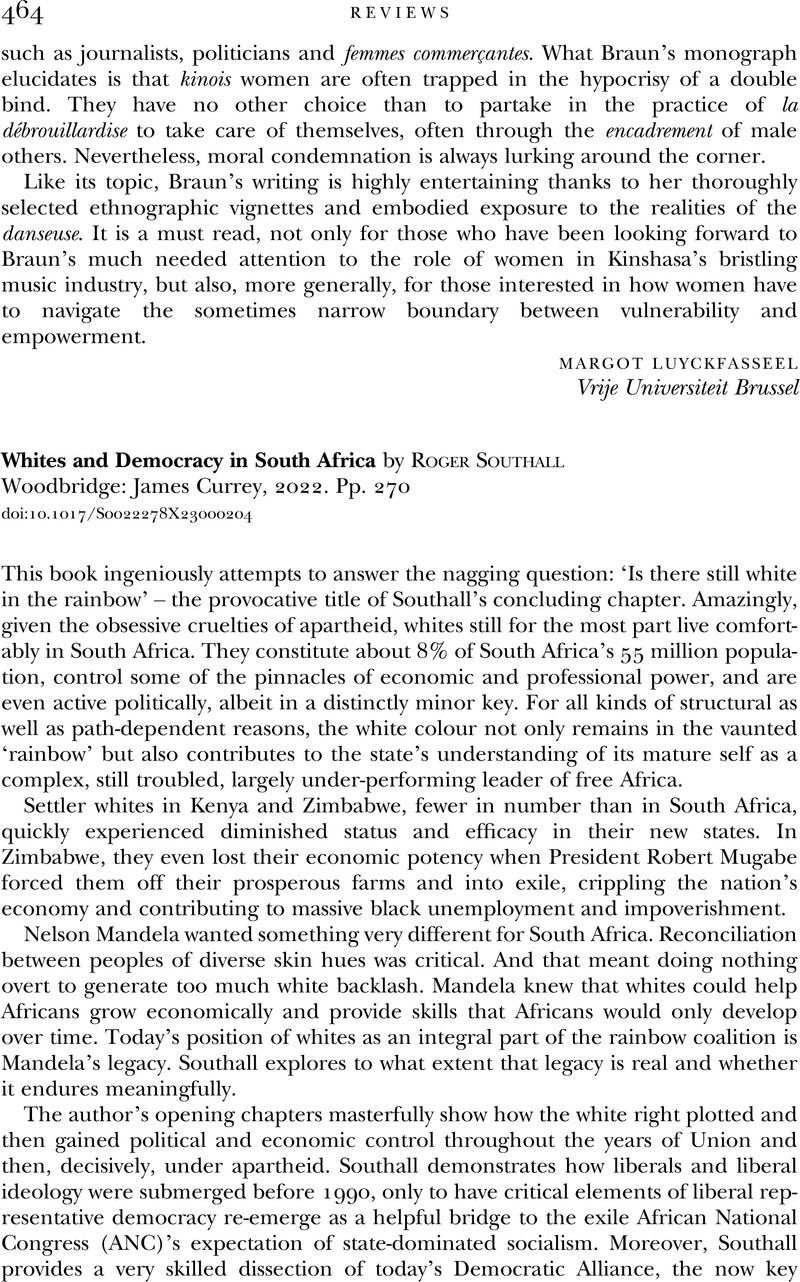No CrossRef data available.
Article contents
Whites and Democracy in South Africa by Roger Southall Woodbridge: James Currey, 2022. Pp. 270
Review products
Whites and Democracy in South Africa by Roger Southall Woodbridge: James Currey, 2022. Pp. 270
Published online by Cambridge University Press: 28 November 2023
Abstract
An abstract is not available for this content so a preview has been provided. Please use the Get access link above for information on how to access this content.

Information
- Type
- Review
- Information
- Copyright
- Copyright © The Author(s), 2023. Published by Cambridge University Press


